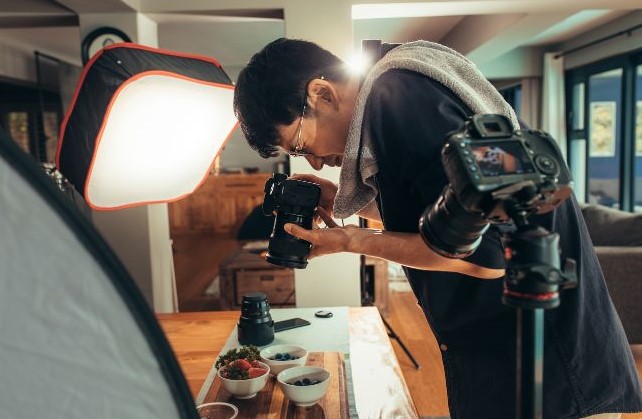

Food Photography: How to Capture the Best Photos of Your Food
Introduction
Food photography has become a prominent art form and an essential aspect of culinary culture. Whether you’re a professional food blogger, a restaurateur showcasing your menu, or just someone who enjoys sharing delicious meals on social media, the ability to capture appetizing food photos is a valuable skill. In this blog post, we’ll explore how to capture the best photos of your food, making every dish look as delectable as it tastes.
**1. Lighting is Key**
One of the most critical aspects of food photography is lighting. Natural light is your best friend. Position your dish near a window or a source of soft, diffused sunlight. Avoid harsh, direct sunlight, as it can create unflattering shadows and highlights. If natural light isn’t available, use softbox lights or diffusers to mimic it.
**2. Composition Matters**
Compose your food photos thoughtfully. Pay attention to the rule of thirds, where you divide the frame into nine equal parts with two horizontal and two vertical lines. Place your dish at the intersection points or along the lines to create a visually appealing composition. Experiment with angles, but shooting from a slightly overhead perspective often works well for food.
**3. Props and Styling**.
Consider the props and styling elements that enhance your food’s presentation. Choose dishes, utensils, and backgrounds that complement the food’s colors and textures. Fresh herbs, condiments, and garnishes can add a pop of color and freshness to your photos. However, be mindful not to over-clutter the scene; simplicity often works best.
**4. Focus on Details**
Food photography is about capturing the intricate details that make a dish mouthwatering. Use a wide aperture (low f-stop) to create a shallow depth of field, allowing you to focus on specific elements while blurring the background. Highlight textures, such as the crispy crust of a pizza or the juicy, tender meat of a steak.
**5. Use a Tripod**
A tripod helps maintain stability and ensures sharp, clear images. It’s especially useful when shooting in low light conditions or using slow shutter speeds. A tripod also allows you to take your time composing the shot and making adjustments without worrying about camera shake.
GET EXCLUSIVE ACCESS TO OUR EXPERTS CREATOR'S CORNER TIPS AND ADVICE:
- Get AHEAD of the Competition.
- FREE Membership to Mia’s Weekly Insiders secrets.
- FREE tailored resources and gifts.
- PLUS qualify to receive personal email support.

* We respect your privacy. We will not spam you.
**6. White Balance and Color Correction**
Proper white balance is crucial to ensure accurate colors in your food photos. You can set your camera’s white balance manually or adjust it in post-processing. Be mindful of color temperature; warm lighting can make food appear more inviting, while cooler lighting may create a fresh, modern look.
**7. Post-Processing**
Editing is the final step in creating stunning food photos. Use photo editing software like Adobe Lightroom or Photoshop to enhance colors, contrast, and sharpness. Be cautious not to over-edit, as natural-looking photos often have greater appeal.
**8. Tell a Story**
Food photography isn’t just about showcasing dishes; it’s about telling a story. Consider the narrative behind the meal you’re capturing. Is it a cozy homemade dinner or an elegant restaurant experience? Your composition, styling, and props should reflect the story you want to convey.
**9. Practice, Experiment, and Learn**
Like any skill, food photography improves with practice. Experiment with different lighting setups, angles, and compositions. Study the work of professional food photographers and food stylists to gain inspiration and insight.
**10. Patience is a Virtue**
Finally, patience is key in food photography. Take your time to set up the shot, make adjustments, and review your images. Sometimes, waiting for the perfect moment when the steam rises from a hot dish or a cheese pull happens can result in extraordinary photos.
Conclusion
Food photography is a delightful blend of art and technique. With the right approach to lighting, composition, styling, and post-processing, you can capture mouthwatering images that not only make your food look irresistible but also tell a captivating culinary story. So, grab your camera, explore the world of food photography, and let your creativity and passion for food shine through your images.
MORE LIKE THIS...
Bringing you the latest information, ideas, products and services for your E-commerce business.
Copyright 2024 E-Market Pulse
Contact Us
We may receive compensation from partners listed through affiliate partnerships, at no cost to you. This doesn’t influence our ratings, and the opinions are our own
Subscribe to our Newsletter
Get updates on products and services specially targeted to help you succeed.
